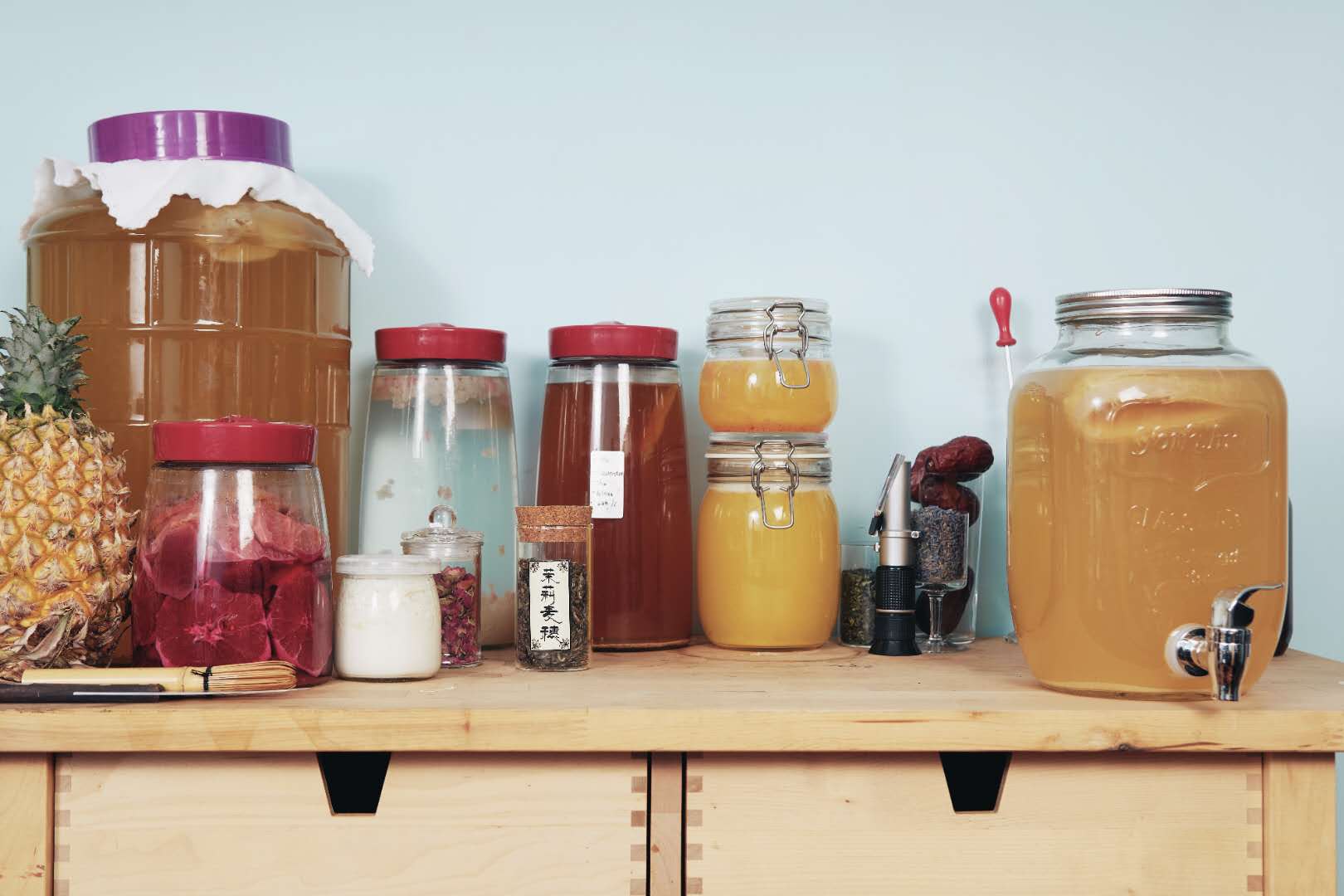The pros share tips on making your own and finding unique ways to incorporate it into your drinks program. By Elysia Bagley.
On our hunt for some newfangled low abv drinks and methods, DRiNK caught up with two kombucha pros –Elijah Holland (EJ), executive chef, mixologist and botanist of Shanghai’s Oysterlicious group (which includes urban foraging bar and restaurant Botanik), and Marcia Xiao, co-founder of Hope & Sesame in Guangzhou and owner of newly-launched Marcia Fermentology and its kombucha line, MoMing.
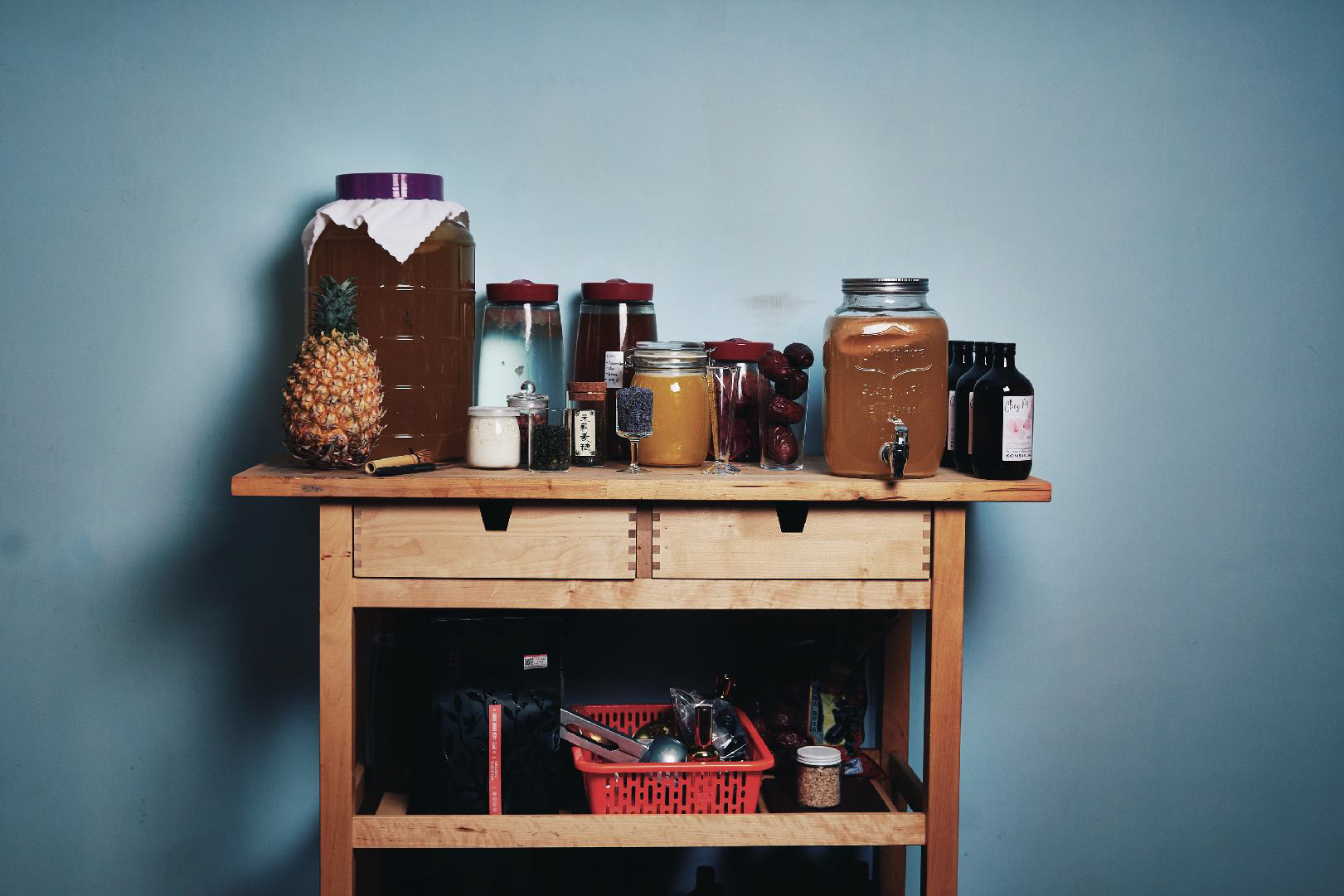
Bringing kombucha into your bar
“The beauty of a kombucha is that there are virtually no limits – the opportunities are endless when it comes to the art of crafting and using it at your bar,” says EJ. Here he gives a few ideas on how to incorporate it into your cocktails and drinks program as a whole.
As is
Kombucha’s versatility makes it a nice homemade addition to the low abv section of a menu (remember, the brew naturally produces a tiny bit of alcohol, so it’s not technically alcohol-free). “You can craft whatever your heart desires in terms of flavour varieties and what you want to change, feature or use in the base,” EJ says. Play around with profiles to reflect seasonality and local ingredients: some of Marcia’s blends include white tea-mint-peach and jasmine-lychee, while other popular combos include honey, mixed berry, and ginger.
As a stand-in for citrus
With many looking to alternative acids in order to reduce bar waste from citrus fruits, kombucha can be one solution. “As we all know, many cocktails and drinks have lemon or lime juice as a feature, due to the acidic notes that help complete their flavour profiles. A well-nurtured and looked after kombucha also has this feature of acidity to it.”
As a distinctive ingredient for your signatures
“For me, kombucha provides a really great way of incorporating different and sometimes more complex or specific elements and tastes into both alcoholic and non-alcoholic drinks,” shares EJ. Besides as a substitute in classics, he sees it as an ideal component for many shrubs, sours, and gin and whisky-based drinks (see cocktail recipe below by EJ and the group’s bar manager Zander Boshoff). “As it can be made in a huge variety of flavours, it can be tailored differently to the exact needs of whatever you may be creating, giving you the extra oomph of flavour or point of difference you may be looking for while trying to create or master the drink you are trying to achieve.”
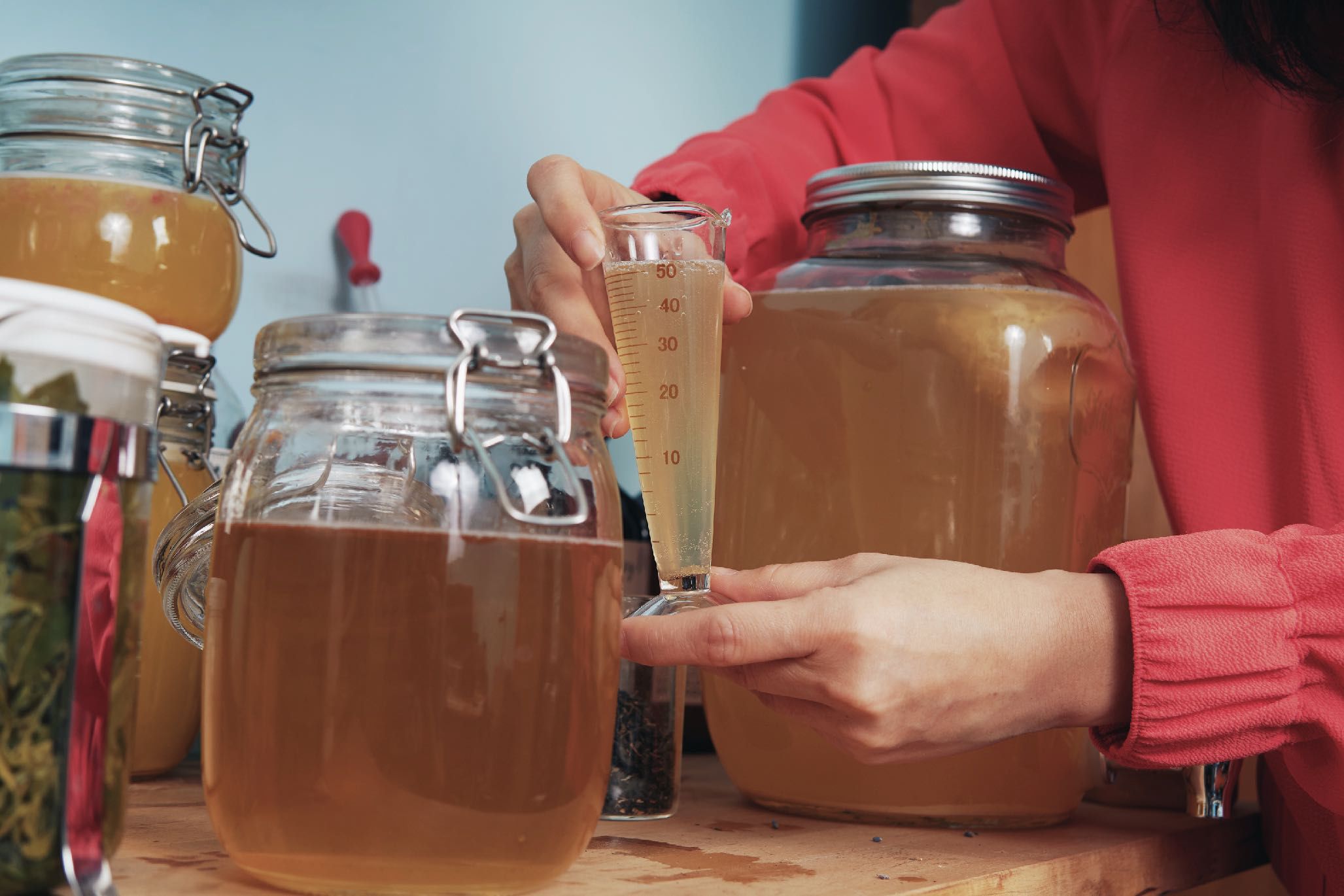
DIY: Tips for successful kombucha brewing
After many months of experimentation, Marcia shares some insight about how to ensure quality batches each time.
Choose the right ingredients
Water: It’s important. “Kombucha does not like mineral water, extra minerals or chlorine, as it will disturb or kill the microsystem,” explains Marcia. PH7 or close is the best.
Tea: Pesticide-free, whole leaf, unflavoured teas are the best choice. Infuse fermented teas at 90C for 10 minutes (with pu’er or darker fermented teas, infuse until the water cools); infuse green teas at 90C for 3 minutes; fruit teas at 85C for 3-5 minutes and then a second cold infusion. Do NOT use cold brew teas, as raw tea contains bacteria and other contaminants.
Sugar: Use natural cane sugar (as it has fewer impurities) or organic rock sugar (Marcia’s top choice for its mild sweetness).
Fruits and additives: For fruit infusions, try to use organic, seasonal fruits, thoroughly washed with skins removed. Natural fruit purees can add nice flavour and texture, so long as there are no additives. Same goes with homemade fruit syrups. When adding fruit, your kombucha needs to be at least 14 days old – the best is to add the fruit 48 hours before serving or cold storing.
Mind the sugar
You can always adjust the amount of sugar you use based on your preferences, but keep in mind: the more sugar you add, the sourer the final product becomes and the more alcohol it produces.
Store it properly
Unflavoured, mature kombucha can be stored at room temperature. For kombucha with added fruit, store under 6C, at which fermentation mostly ceases. For all matured kombuchas, use a well-sealed bottle to maintain fizziness.
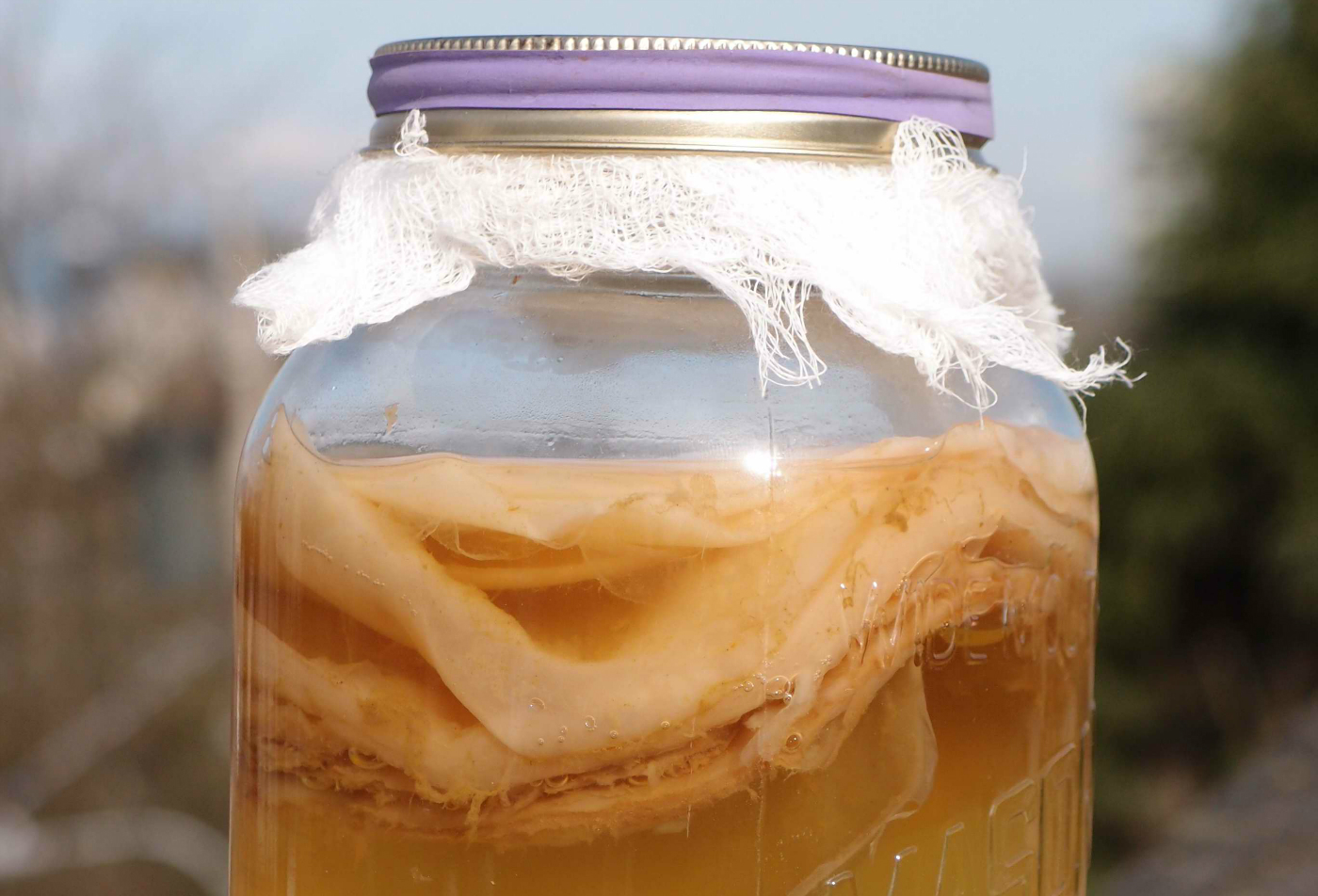
Watch your SCOBY
A SCOBY – symbiotic culture of bacteria and yeast – grows inside every batch of healthy kombucha. Sure, it’s slimy and super gross looking, but that living beast is a sign that things are going right. Marcia doesn’t use a SCOBY when she begins a new batch, but EJ does. A chunk of SCOBY protects the new brew it while it ferments, as kombucha is more vulnerable to new bacteria without it. So it’s recommend you add one.
Waste not: What to do with extra SCOBY
A healthy SCOBY grows fast, and even if you share it with friends and keep making new batches of kombucha, you’ll end up with more happy hunks of bacteria than you know what to do with. So how to avoid wasting a healthy and useful ingredient? “Incorporating a SCOBY becomes almost more fun than the kombucha itself,” says EJ. “It is the heart and soul of the kombucha, or “mother” as we call it – it is constantly growing and growing on its own, on top of creating children of its own.”
Edible garnish or bar snacks
To make a SCOBY jube (a style of gummy candy), put a piece of SCOBY in a dehydrator at 60C until it gets to jube-like texture. Cut into strips or shape of your choice; roll the pieces into plain, flavoured, spiced or salted sugar.
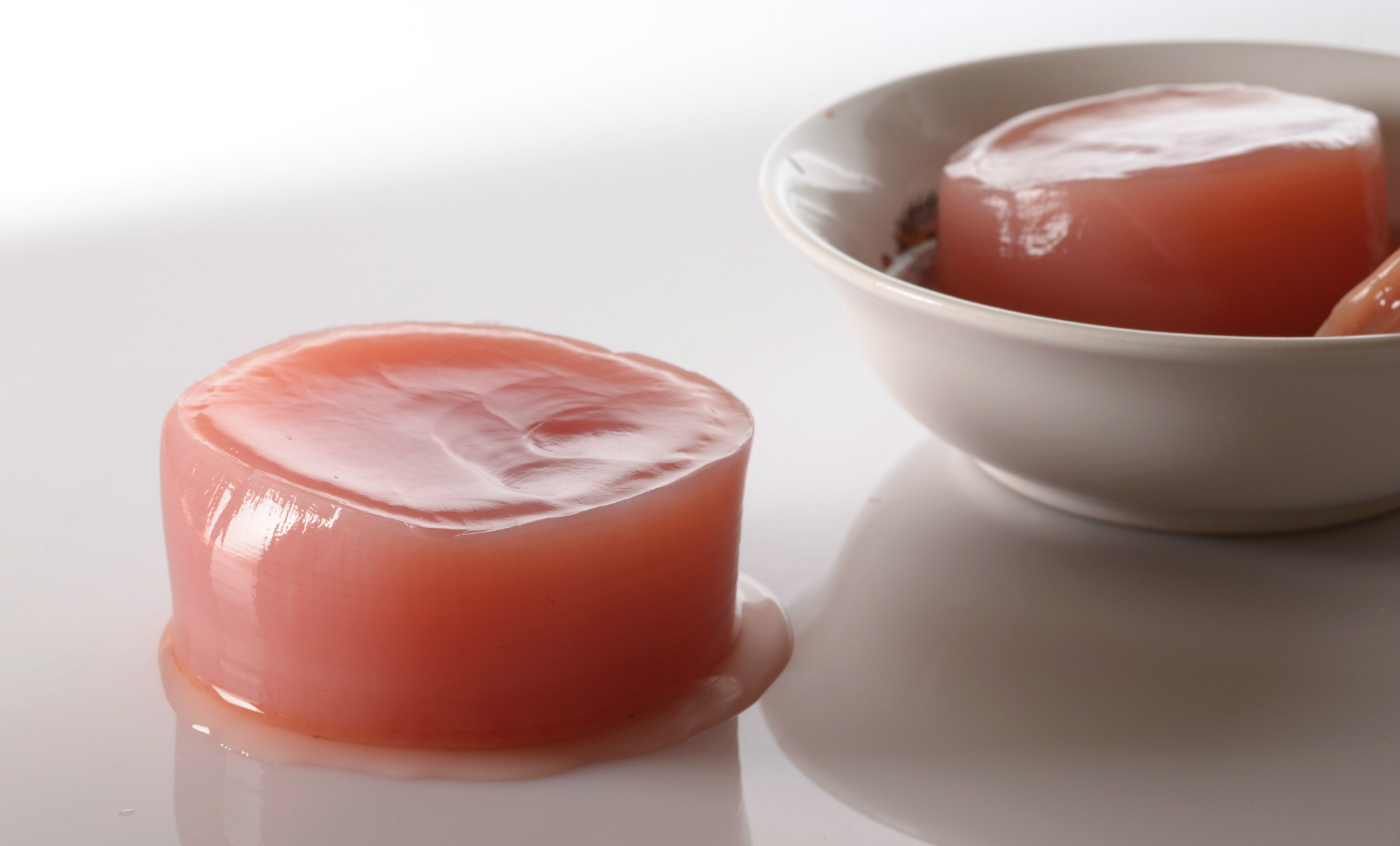
Curd
Make what EJ calls a “gob-smacking delicious curd”, to use in drinks or as an element of garnish. Simply swap out the fruit juice or puree in your favourite curd recipe (for example lemon), replacing it with SCOBY that has been blended with a bit of kombucha.
Liquids and syrups
Poach a piece of SCOBY in your homemade syrups or other liquid ingredients to imbue a bit of acidity and sourness to their profiles.
Smoke and muddle
Smoke a piece of SCOBY and crumble or break it into small cubes, and then muddle it into your favourite Negroni or Old Fashioned.
Recipe (click to view)
Kombucha by Marcia Fermentology
Recipe (click to view)
The Mexican Cure by Elijah Holland and Zander Boshoff


